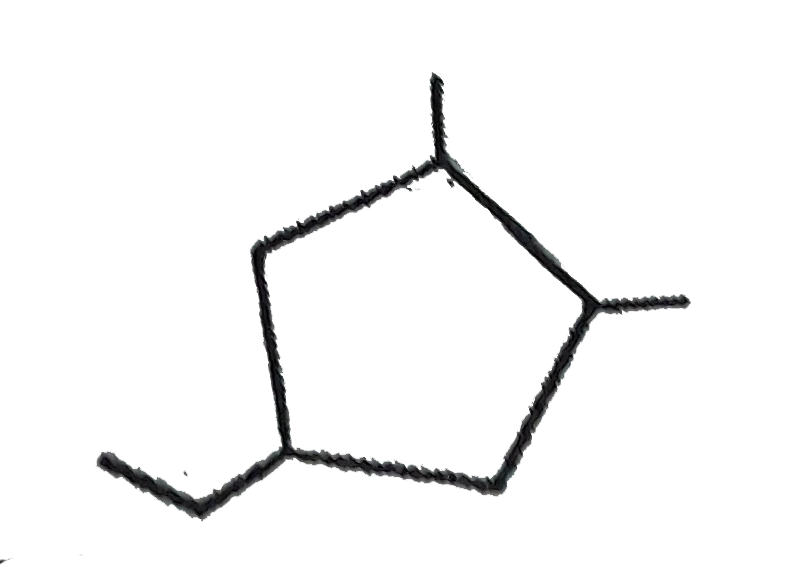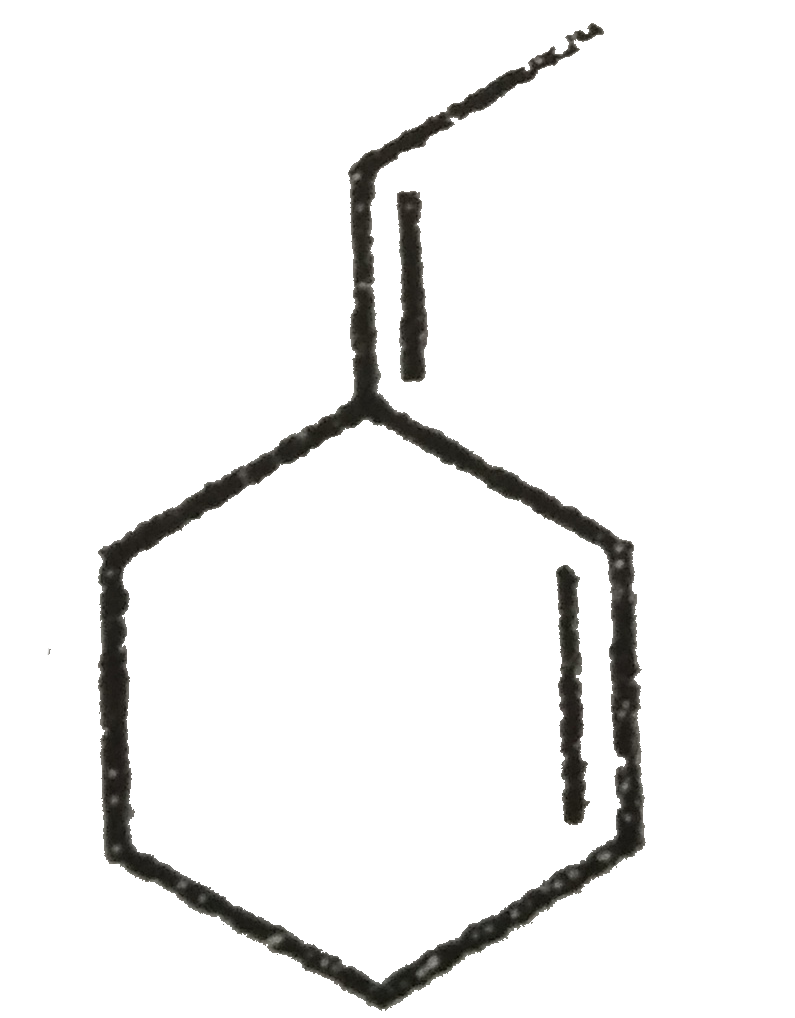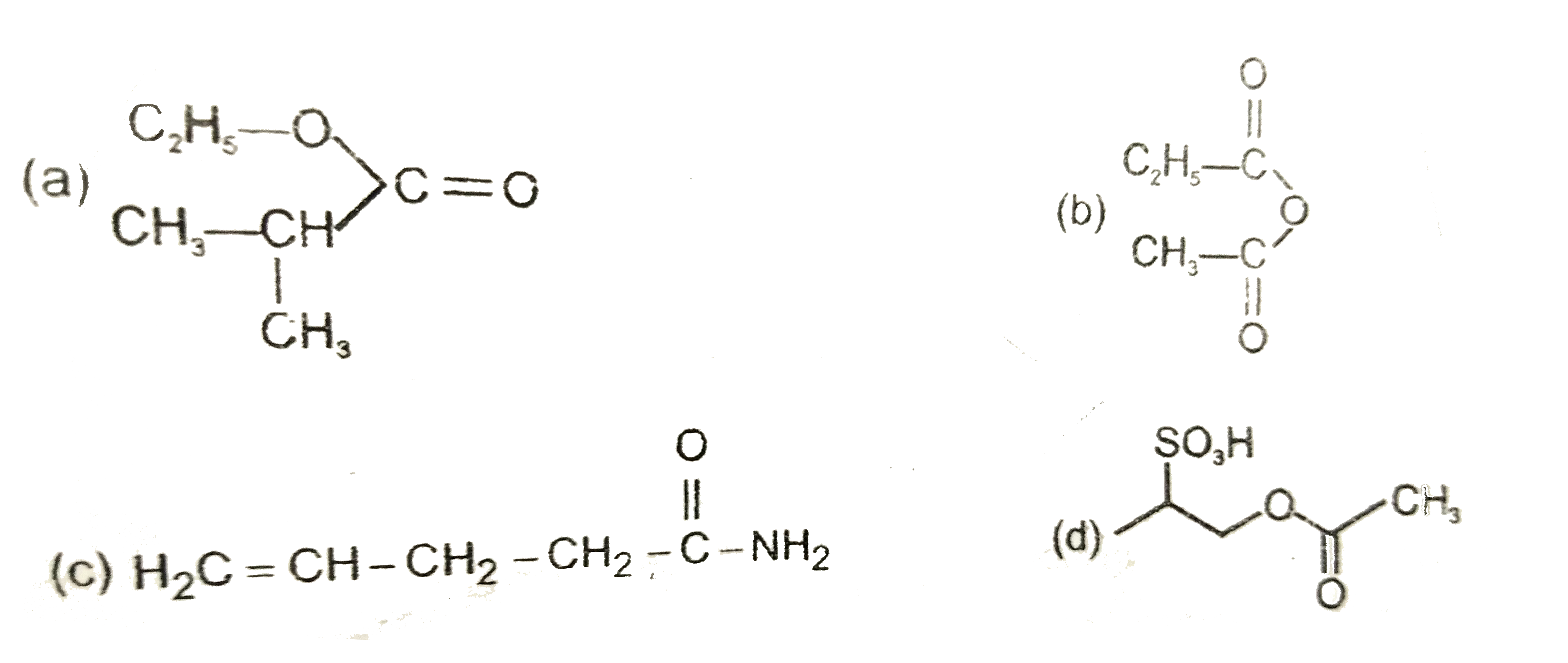Select correct IUPAC name
Methane-1,1,1,1-tetracarboxylic acid
5-Carbonyl-heptane-1,7-dioic acid
2-Chloro ethanoyl chloride
1-Bromo-3-fluoro-4-methyl cyclohexane
The correct Answer is:A, C
To determine the correct IUPAC names from the given options, we need to analyze each option step by step.
Step 1: Analyze the First Option
Option 1: Methane 1,1,1,1 tetra carboxylic acid
1. Identify the structure: Methane has one carbon atom (C). If we replace all four hydrogen atoms with carboxylic acid groups (COOH), we get a structure with four COOH groups attached to the same carbon.
2. Naming convention: When there are multiple carboxylic acid groups, we use a special naming convention. Instead of using "oic acid," we use "tetra carboxylic acid."
3. Conclusion: The name "methane 1,1,1,1 tetra carboxylic acid" is correct because it accurately describes the structure.
Step 2: Analyze the Second Option
Option 2: 5 carbonyl heptane 1,7 dioic acid
1. Identify the structure: Heptane indicates a 7-carbon chain. The term "dioic acid" suggests there are two carboxylic acid groups.
2. Position of carbonyl: The carbonyl (C=O) group is at the 5th position, but we need to ensure that we are numbering the chain correctly to give the substituents the lowest possible numbers.
3. Correct numbering: If we start numbering from the end closest to the carboxylic acids, we can find that the carbonyl group should actually be at the 3rd position, not the 5th.
4. Conclusion: The correct name should be "3-carbonyl heptane 1,7-dioic acid." Therefore, this option is incorrect.
Step 3: Analyze the Third Option
Option 3: 2-chloroethanoyl chloride
1. Identify the structure: Ethanol chloride indicates a 2-carbon chain with a chlorine substituent.
2. Naming convention: The name suggests that there is a chlorine atom at the second position of the ethyl chain.
3. Conclusion: The name "2-chloroethanoyl chloride" is correct as it accurately describes the structure of the compound.
Step 4: Analyze the Fourth Option
Option 4: 1-bromo-3-fluoro-4-methylcyclohexane
1. Identify the structure: Cyclohexane is a 6-membered carbon ring. The locants given are 1 for bromo, 3 for fluoro, and 4 for methyl.
2. Correct numbering: We need to apply the lowest set of locants rule. If we start numbering from the bromo group, we get 1-bromo, 3-fluoro, and 4-methyl. However, if we start from the fluoro group, we would get 1-fluoro, 2-bromo, and 4-methyl.
3. Conclusion: The correct numbering should give the lowest set of locants, which means the correct name should be "1-bromo-2-fluoro-4-methylcyclohexane." Therefore, this option is incorrect.
Final Conclusion
The correct IUPAC names are from the first and third options.
Summary of Correct Options
- Correct Options: 1 and 3
- Incorrect Options: 2 and 4
Option 1: Methane 1,1,1,1 tetra carboxylic acid
2. Naming convention: When there are multiple carboxylic acid groups, we use a special naming convention. Instead of using "oic acid," we use "tetra carboxylic acid."
3. Conclusion: The name "methane 1,1,1,1 tetra carboxylic acid" is correct because it accurately describes the structure.
Option 2: 5 carbonyl heptane 1,7 dioic acid
2. Position of carbonyl: The carbonyl (C=O) group is at the 5th position, but we need to ensure that we are numbering the chain correctly to give the substituents the lowest possible numbers.
3. Correct numbering: If we start numbering from the end closest to the carboxylic acids, we can find that the carbonyl group should actually be at the 3rd position, not the 5th.
4. Conclusion: The correct name should be "3-carbonyl heptane 1,7-dioic acid." Therefore, this option is incorrect.
Option 3: 2-chloroethanoyl chloride
2. Naming convention: The name suggests that there is a chlorine atom at the second position of the ethyl chain.
3. Conclusion: The name "2-chloroethanoyl chloride" is correct as it accurately describes the structure of the compound.
Option 4: 1-bromo-3-fluoro-4-methylcyclohexane
2. Correct numbering: We need to apply the lowest set of locants rule. If we start numbering from the bromo group, we get 1-bromo, 3-fluoro, and 4-methyl. However, if we start from the fluoro group, we would get 1-fluoro, 2-bromo, and 4-methyl.
3. Conclusion: The correct numbering should give the lowest set of locants, which means the correct name should be "1-bromo-2-fluoro-4-methylcyclohexane." Therefore, this option is incorrect.
The correct IUPAC names are from the first and third options.
- Correct Options: 1 and 3
- Incorrect Options: 2 and 4
Topper's Solved these Questions
- BOOK - RESONANCE ENGLISHCHAPTER - IUPAC NOMENCLATURE & STRUCTURAL ISOMERISM EXERCISE - Advanced Level Problems Part-318videos
IUPAC NOMENCLATURE & STRUCTURAL ISOMERISM
- BOOK - RESONANCE ENGLISHCHAPTER - IUPAC NOMENCLATURE & STRUCTURAL ISOMERISM EXERCISE - Advanced Level Problems Part-52videos
IUPAC NOMENCLATURE & STRUCTURAL ISOMERISM
- BOOK - RESONANCE ENGLISHCHAPTER - IUPAC NOMENCLATURE & STRUCTURAL ISOMERISM EXERCISE - Advanced Level Problems Part-1 : Practice test-129videos
IUPAC NOMENCLATURE & STRUCTURAL ISOMERISM
- BOOK - RESONANCE ENGLISHCHAPTER - IONIC EQUILIBRIUMEXERCISE - partIII one or more than one options correct type10videos
IONIC EQUILIBRIUM
- BOOK - RESONANCE ENGLISHCHAPTER - METALLURGYEXERCISE - ORGANIC CHEMISTRY(Alkyl Halide, Alcohol,Phenol,Ether)17videos
METALLURGY
Similar Questions
Select the correct IUPAC name for the following
 View Solution
View SolutionSelect the correct IUPAC name of the following compound.
 View Solution
View SolutionSelect the correct IUPAC name of [C4H4Fe(CO)3] complex .
View SolutionSelect the correct IUPAC name for
[Ti(π−C5H5)2(O−C5H5)2] .View SolutionThe correct IUPAC name of
 View Solution
View SolutionWrite the correct IUPAC name of the following:
 View Solution
View SolutionWrite the correct IUPAC name of the following:
 View Solution
View SolutionWrite the correct IUPAC names of following:
 View Solution
View SolutionWhat should be the correct IUPAC name for diethylbromomethane?
View Solution
Which are the correct IUPAC names of the following compound?View Solution

